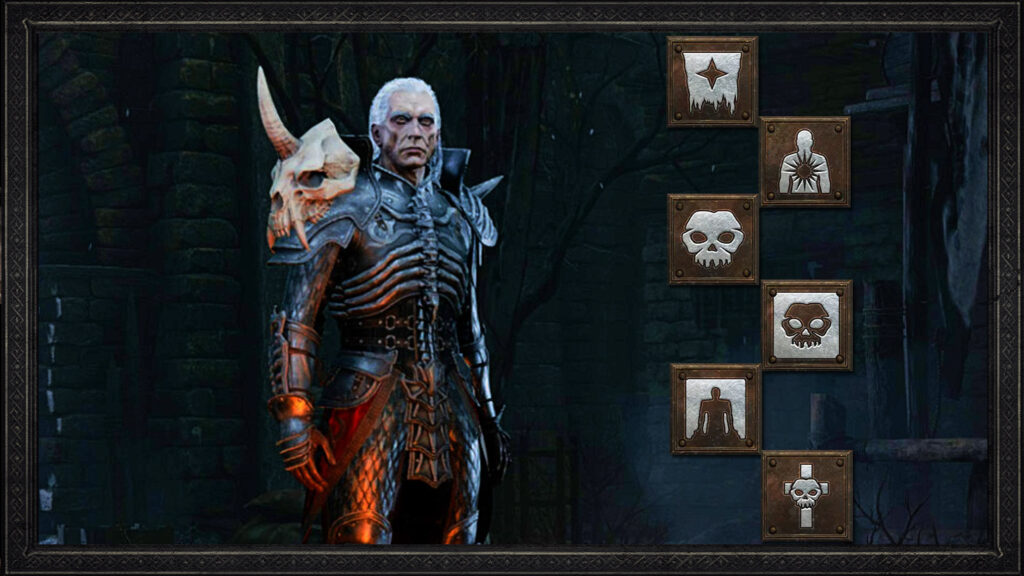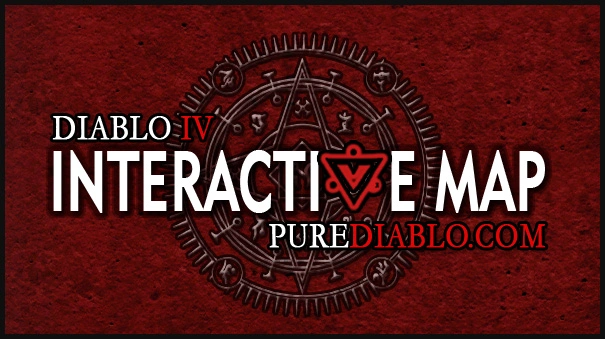Introduction
The Necromancer probably has the most variability of possible builds among the Diablo 2 character classes. The Summoning tree provides multiple options for minions; the Poison and Bone tree allows powerful poison damage, magic-based bone damage and defensive spells, and the all-powerful Corpse Explosion that brings area-of-effect fire and physical damage; and the Curses tree allows complementary spells that enhance damage or provide major crowd control.
This allows melee builds, summoners with skeleton fighters dealing physical damage, summoners with skeleton mages dealing elemental damage, golem-mancers who focus on powerful golems to pair with the merc, summoners that focus on reviving dead enemies to fight with the necro, poison spell casters, bone (magic) spell casters, and back to melee with any combo of summons. All of them can draw on various curses to enhance offensive attack or manage the battlefield, and Corpse Explosion is the great equalizer, potentially levelling entire screens at higher levels.
Among all these options, however, the safest and most fool-proof build is also extremely powerful on the offensive side: the Fishymancer. Named after Nightfish, an SPFer who pioneered the build (and literally wrote the book on it), it uses maxed skeleton warriors (Raise Skeleton), Skeleton Mastery, and Corpse Explosion, with Amplify Damage as the primary curse. The mercenary will be Act II Nightmare (Might), for the extra damage for the skeletons and merc.
Beyond that core build, it’s highly customizable, allowing maxed Golem Mastery, high-level Revive, or higher-level secondary curses. The Necromancer can also wade into battle himself alongside the skeletons as a “commandomancer” (which is actually a distinct build and so not addressed here, but covered in this guide).
This Guide is intended to give a quick-and-easy overview of the key details on the build and pointers on playthrough/progression. It also includes some thoughts on gear and options for using the extra skill points. I also highly encourage reading Nightfish’s guide, which is comprehensive and well-researched. As a result, rather than repeating all that is included there, this Starter Guide is focused on key information for the build and will often link to the relevant section of Nightfish’s guide for anyone interested in a more detailed explanation or analysis of the why behind the recommendations.
Overview
As Nightfish said, this build can beat the game naked (without gear), reflecting just how solid it is as a first character to explore Diablo II. Although the build is not at all item-dependent, better gear obviously makes the character stronger. I’m on my third restart, and the Fishymancer has been my first or second character each time. So, I obviously highly recommend it for anyone new to Diablo II or as a first foray into the Necromancer character class.
What makes the Fishymancer build so effective?
- Offense: Almost no monsters are immune to the attacks. Amplify Damage breaks the immunity of every physical immune (PI) regular monster and almost all PI bosses. The skeletons and mercenary can therefore deal physical damage to nearly every monster the crew will encounter. And Corpse Explosion deals fire damage (in addition to physical) for a second type of damage with a large area of effect.
- Defense: The Necromancer also has excellent defense, with usually at least 9 skeletons, a golem, the mercenary, and the option for revives to keep monsters occupied. As long as resists are reasonable (especially for fire and lightning) for elemental projectiles, very little will pose a threat to him if he doesn’t get recklessly out in front of his minions.
- Magic Finding: Another plus for the build is the ability to pack on lots of Magic Find (MF) gear. Because he’s not dependent on items for damage and due to the points summarized under Defense above, MF can be prioritized from gear slots that don’t offer significant boost to +skills. This makes the Fishymancer a strong area runner for late game/end game playing, particularly the Pit (underground area in Act 1 Tamoe Highlands) and the World Stone Keep (Act 5).
What are the downsides to the Fishymancer build?
- For some players, it can be a tad dull to simply follow the horde of skeletons casting curses and then dropping Corpse Explosion to level packs. I personally find it engaging, but it may not be everyone’s cup of tea.
- The Fishymancer is not the best Act Boss runner. He needs to have his summons, and they are not as strong against the Act Bosses. So he is not ideal to farm Mephisto, Andariel or Pindleskin, which are generally quick runs. It’s still doable, but the Sorceress, Amazon, or nearly any other beginner build will fare better at those targets.
Stats
This is an area where I diverge a bit from Nightfish’s recommendations. This is in part due to his play in Hard Core (HC) exclusively and doing extended running at end game in HC. But it is also due to changes since v1.10 when he wrote that guide, both in terms of easier access to higher runes and also changes that reduced certain dangers (notably Oblivion Knights being nerfed and fixing the Fire Enchanted death explosion bug in Hell).
Stats – Target Values
This is quite straightforward actually:
- Strength: minimum necessary to equip gear
- Dexterity: minimum necessary to equip gear
- Vita: all extra points here
- Energy: none
I almost always have at least 30 stat points saved up as I quest through in case I get a drop that requires more strength or dexterity. The Necromancer gets only 2 life per point in Vita, so putting those 30+ points into Vita only nets 60+ life.
Nightfish’s guide has a lot more detail and analysis around stats that may (or may not) be of interest to new players. A big difference between my recommendation and Nightfish’s is in Dexterity, where he recommends investing to keep max block (75%). This ends up being close to 200 points at late Hell playthrough, assuming a shield with decent innate block percentage.
My recommended approach ends up with base Dexterity (or at most ~ 50 points to equip gear) for the basic Fishymancer, allowing an extra 300 hit points. Even with relatively low return-per-point-invested, that is a material increase to the life pool. I also find the slow-ish block rate for Necromancers to be a liability with high block chance, especially as compared to focusing gear and charms on Faster Hit Recovery (FHR) for the 86% breakpoint or at minimum the 56% breakpoint.
Stats – Progression
I recommend investing the first points into strength up to 36 points, which allows the character to equip Ring Mail armor. With a 3 open socket (3os) Ring Mail, the sockets can be used on chipped topazes to start the Magic Finding journey. After that, I think everything can go into Vita, but as noted, I generally keep at least 30 unspent points available.
A 3os Breast Plate will be available in Act II Normal, allowing it to be filled with flawed topazes for improved Magic Find and no penalty to Stamina. Key gear should be equip-able at the 36 strength and with any extra points filled by the 30-point cushion.
A great resource for new players is this guide by HC_Gunther (and the one linked in it by jiansonz) about untwinked, single-pass tournament playthroughs. For anyone picking the Fishymancer as a first character, this is an invaluable resource to build up some early gear and make progress smooth. Even if this is not the first character, this is still a great resource for tips and ideas of solid gear for Normal and into Nightmare. It makes the early progress easier, and even if the playthrough isn’t single pass (not rerunning areas), there is great info there.
Other Stats – Resists and Faster Hit Recovery
There are other stats that can be improved by gear (i.e., stat points can’t impact these, or only do so indirectly). For the Fishymancer, resists and Faster Hit Recovery are key, with Faster Run/Walk helpful but not essential.
Resists: I always aim to get these maxed. It is true that maxed resists are not necessary to survive, but it certainly helps! In particular, fire and lightning are key, and I’d prioritize maxing those. In particular, I’d be loath to enter Act III in any difficulty with less than 50% for either and ideally approaching 75%. Cold and Poison are less important, but I still think they are worth aiming to max.
Faster Hit Recovery: There is something called stun lock, where successive physical enemy attacks put the character into hit recovery so he can’t move, and gets hit again, etc. Because Necromancers have lower life pools generally, hit recovery is triggered more often—it’s tied to damage taken as a percentage of the life pool. Faster Hit Recovery reduces the duration of the “hit recovery” animation, allowing the character to get moving (or cast a spell) quicker.
Nightfish advocates blocking to limit the number of hits taken (which can trigger hit recovery). But I find the slow block rate for Necromancers to be dangerous, especially if coupled with lower Hit Recovery rate for any attacks that aren’t blocked and trigger Hit Recovery. Recall, this build is generally not in harm’s way. So the physical hits often come unexpectedly, maybe while focusing on curses and not noticing that pack of Blunderbores coming from behind. Or if the player gets frustrated in tight quarters (I’m guilty as charged here) and moves ahead of the pack through a doorway only to see a pack of vipers. Faster Hit Recovery can be key to getting out of those jams quickly and letting the skeleton pack engage to take the heat off the Necro.
I always aim for the 86% breakpoint. With charms and items that is often doable, especially with Shaels in armor and helm giving 20 FHR each. But 56% should be the minimum, especially as the Necro moves into later Nightmare difficulty and enemies start hitting harder.
Faster Run/Walk: It’s not essential, but moving faster allows the Necro to position within his army, and get out of trouble more quickly. It’s not hard to get 20 FRW from boots that also have Magic Find. So well worth taking if available. I also think it’s worth sacrificing some Magic Find in Hell in favor of FRW if necessary.
Skills
Skills – Target Values
In another slight variation from Nightfish, I define the core build in a more limited way. Here’s my rationale: having 8-9 skills to manage can be challenging, especially if some are only situational. I’ve died more from mis-clicking my hot keys for that situational skill than I have from simply bearing down and using my core skills with tactical maneuvering (and retreats as needed). Especially for newer players, I think trying to manage so many skills and hotkeys may be difficult, so simply focusing on the core skills may have better pay off.
But one thing that sets the Fishymancer apart from Starter builds for other Character Classes is that his early game build is his late game build. So there is no need to use respecs to move through the game, although they certainly can be used to rebalance stats or skills. But, as noted below in the Overcoming Common Sticking Points section, it’s possible to forget about a key skill that can get the Necro stuck, so I think it’s important to not use the Normal respec to ensure it’s available throughout Normal in case needed.
Core Build
| 20 Raise Skeleton | 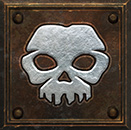 |
| 20 Skeleton Mastery | 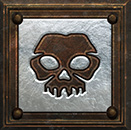 |
| 1 Clay Golem | 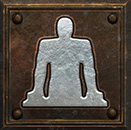 |
| 1 Golem Mastery | 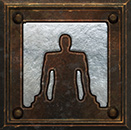 |
| 1 Summon Resist | 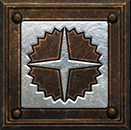 |
| 20 Corpse Explosion (Teeth prerequisite) | 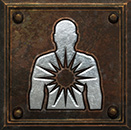 |
| 1 Amplify Damage | 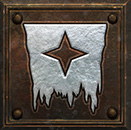 |
| 1 Decrepify (Weaken and Terror prerequisites) | 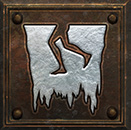 |
That’s only 67 points for the core build, leaving a lot of room for customization. For context, with +skills from quest rewards, that build will likely be finished around A3 Nightmare.
Core skills:
- Raise Skeleton: This gives the Necro his skeleton army. At level 20, it provides 8 skeletons, with + skills easily allowing 10 skeletons or more.
- Skeleton Mastery: This adds life and damage to the skeletons.
- Clay Golem and Mastery: Needed to get Summon Resist, and the Clay Golem is an extra minion to draw fire, plus it slows targets with successful attack, which is handy for Act Bosses.
- Summon Resist: Adds resists to summons, fixed for each Difficulty level. This is important to keep skeletons from melting in the face of elemental attacks.
- Corpse Explosion (CE): CE deals a fixed range of damage drawn from the life of the monster that provided the corpse, split 50/50 between physical and fire. It becomes especially effective in Hell as monster hit points increase. The rationale for maxing is that, although the damage range is fixed, each skill point adds to the explosion’s radius. At max level with plus skills, the CE radius can extend off screen, making it a devastating area of effect skill.
- Amplify Damage: This curse is critical to the build and the main curse used. It reduces enemy physical resists by 100%, which breaks physical immunity for nearly every monster in the game. Extra points add to radius, but it is generally fine even at skill level 1 (with + skills from gear).
- Decrepify: This curse reduces physical resists by 50%, while also slowing and reducing enemy’s physical damage output. Relative to Amplify Damage, it is less helpful in standard gameplay, but it is often key against Act Bosses. Getting a point here before Normal Duriel is often critical to getting past that fight.
Customization
There’s a lot that can be said here. Pretty much any skill can be added on top of the core build, but I will focus on what I think are the best options. The first few are utility skills that may be worth getting but are not essential for the build to succeed, followed by three paths for investing the extra points for maxing another skill.
Utility Skills
- Attract: This requires Dim Vision and Confuse as prerequisites. Attract makes the target monster a focus on attacks from other monsters, potentially relieving heat from the Necro, merc and army. Why is this useful? Once the army is summoned, I don’t think it is. But if the player struggles to get those first few corpses for skeletons, this can be very handy to help the merc get the first corpses by distracting the enemies. The other nice thing is that this isn’t overridden by Amplify Damage – the merc gets the benefit of that curse while monsters are distracted by their attract-ed former colleague.
- Revive: This resurrects slain monsters to fight alongside the Necro. They do limited damage, but are nigh unkillable until their timer runs (and it’s lengthy). If Blunderbores or monsters with Crushing Blow are revived, they can be useful for Act Boss fights. This is quite handy with multiple points for extra meat shields, but it’s not really necessary with a strong skeleton army.
- Summon Resist: This is a core build skill, but I think it’s worth getting some extra investment to get resists > 50% with + skills.
- Amplify Damage: Extra points add to radius and duration, so possibly worth it if there aren’t too many + skills in gear.
Options for Maxing
- Iron Golem with Golem Mastery: This would be my preferred route. The Iron Golem (IG) can be cast on any item with metal, including those with Crushing Blow. It dies frequently without higher level Golem Mastery (GM), so the recommended route would be 1 point IG and maxed GM. That should be doable by mid- to late-Hell. The IG can occasionally “poof” if the Necro gets too far ahead, but teleport charges or careful play to keep the IG (also affectionately called “Clanky” or “Iggy”) on a tight leash.
- Revives: Go nuts with revives. Why not? Some areas may not present ideal revive candidates, but it can easily add another 10-11 monsters to the army. Nightfish has an entire section on better options for revives. It’s obviously best to pick the stronger options, but a full army of anything can be fun.
- Bone Armor: This skill absorbs physical damage. After the first hard point, investing in the Bone Wall or Bone Prison synergies provides better increase to skill’s absorb than additional hard points in Bone Armor, so additional points are invested in the synergies. With one hard point and a single synergy maxed, it provides ~320 points of damage absorb. I personally wouldn’t go this route: the Necro doesn’t need bone armor when he has an army of 10-11 skeletons to distract enemies, and absorb any physical damage while dealing even more out collectively. And as noted elsewhere, the Necro really shouldn’t be getting hit that much either.
Skills – Progression
I have nothing to add beyond Nightfish’s careful analysis. Players should max the following skills in order: Raise Skeleton, Skeleton Mastery, Corpse Explosion. But a point in Raise Skeleton should occur early in Act 1 Normal, and also a point in Amplify Damage.
It’s generally essential to get Decrepify before tackling Duriel in Normal. I generally quest through at players7 or players8, and my characters generally hit level 24 prior to that fight, even without full clears, so my Necro would have access. If not (or questing through at lower player setting), clearing Canyon of the Magi and one or more false tomb is likely the best option for topping off the experience to open up Decrepify. If level 24 is reached but the player miscalculated or forgot the prerequisites, it is likely worth a respec or rerunning the Canyon of the Magi to level and get extra skill points.
Summon Resist is also key before tackling Diablo in Normal, and it provides a Clay Golem as prerequisite, so perhaps worth shunting some points earlier in the progression from Skeleton Mastery to Clay Golem and Golem Mastery to have an extra summon along the way.
Gear Recommendations
The landscape changed a bit with v1.13 and increased rune drops. Some items that were unrealistic became more so, and others that were possible higher end are potentially accessible on initial playthrough with limited re-running. Again drawing from Nightfish’s guide, I’ve broken it down by untwinked playthrough and higher-end gear, updated to v1.13+.
Untwinked
There isn’t a lot to be said beyond the approach laid out in the HC tourney single pass guide, especially for this build. Focus should be items that give MF, resists and + skills, with +life a nice bonus given the Necro’s stat point allocation. I recommend following that approach at least through Act III Nightmare.
A few key item options are noted below:
- Weapon/Shield: + Raise Skeleton or Skeleton Mastery wand, ideally +3 to Raise Skeleton on wand, and a 2os Necro head with good staff mods for a Rhyme by early Nightmare; spirit sword is also a decent option once 4os weapons become available in Act V Normal; White runeword in 2os wand with + 3 Raise Skeleton or other useful staff mods; it’s possible to shop a +1 Necromancer skills wand in Act IV Normal and a +2 Summon Tree skill wand in Act V Normal, with staff mods potentially adding to + skills for the key skills, but it will likely cost a bit of gold if +3 to staff mods
- Weapon/Shield Switch: A staff with teleport charges can be shopped in Act III Normal, and is very handy on switch to corral the skeleton army and Merc. Another option is a + skill shield (Splendor shield or Lidless Wall are realistic options by Hell) and a + skill focused weapon on switch for summoning skeletons. And then main is focused on MF or resists, etc. for fighting after the army is summoned.
- Armor: 4os Gothic Plate or 3os light armor with pTopazes or Ral/Orts if resists hurting; of the Squid or Whale (+ life) or with FHR, shoppable at Larzuk in Act V Nightmare
- Helm: 3os helm with pTopazes or Rals/Orts if resists hurting; Lore; Tarnhelm
Beyond this, just focus on resists, MF and + skills, in my opinion. Rares will be quite solid for boots and gloves, ring and amulets, but uniques or set combos may beat those out. The HC tourney single pass guide gives a great overview of what those options are.
Twinked Options
Below are what are probably the optimal gear for a Fishymancer. Some options are very rune-rich, so I’ve also identified alternatives that don’t involve those. In general, however, feel free to experiment. If something you have or find seems like it would fit, give it a shot. Remember, Fishymancers can do fine with minimal gear, so going with another option in any slot won’t hobble the build.
- Weapon: Arm of King Leoric (+ skills); Heart of the Oak (+skills and resists); Beast Runeword (for buffing Merc and skeletons—quite end game)
- Shield: Homunculus (candidate for socket if minimizing strength); Spirit (significant strength investment); Rhyme remains a good option, especially in a Necro head with useful staff mods
- Weapon/Shield Switch: No real difference from Untwinked here. A shopped teleport staff is handy without Enigma or an amulet with teleport charges. Or a “summon switch” focused on +skills for summoning the army, with main switch focused on MF, likely with better MF weapon options like Gull dagger or Blade of Ali Baba when twinked.
- Helm: Harlequin Crest (+2 skills and major boost to mana and life pools, with MF as a bonus – strong candidate for socketing); +skill Necro circlet with other nice mods
- Armor: Skin of the Vipermagi; if 2x Um drop (not implausible in v1.13+ with rerunning of areas/LK in Hell), Bone is a great choice for +2 skills and resist all; Chains of Honor; Enigma (quite end game)
- Amulet: Mara’s Kaleidoscope (+2 Skills and resists); Rare/Magic (+skills and resists)
- Boots: War Traveler; Rare
- Belt: Arachnid Mesh; Rare with FHR and stats; Goldwrap up’ed for fourth row of potions
- Gloves: Magefist (FCR and + skill to fire part of Corpse Explosion); Trang Oul’s Gloves (FCR and cold resist); Rare; Chance Guard (MF)
- Rings: Stone of Jordan; Bul Kathos Wedding Band; Rare
- Charms: Summoner GCs; resist and vita and FHR GC/SC
Mercenary
Merc Choice
Nightfish has a detailed comparison of Mercenary options explaining why there is only one choice: Act II Nightmare Offensive for the Might aura. For Normal, I think any Act II option will do, although I lean toward Combat for the life regeneration from Prayer. One general word on the Merc: as his gear improves, he will be highest damage source (and thus source of the first corpse for Corpse Explosion). In general, at end game and at higher player settings, he will often be the main focus of damage with the skeletons supplementary and playing defense/crowd control purposes.
Merc Gear
Early game is generally driven by the Savage Polearm Recipe, hoping for a Partizan that can be rerolled with chipped gem recipe to get 2 open sockets that can accommodate -15% requirements jewels that have hopefully dropped. With some + strength gear, he can often equip such a weapon when the weapon becomes equip-able based on the Merc’s level. Before that, a gambled Pike works well.
I often then keep rolling Savage Polearms, hoping for a second Partizan to be equipped when the Merc gets enough strength to use without -15% requirements jewels, for a further damage boost. I don’t find that the other gear matters much, but a circlet with life leech (gambled) is helpful, or armor/helm needed to hit strength requirements.
Next, keep an eye out for a Partizan in Act V Normal or early Nightmare. Between ilvl 26 and 40, they can roll no more than 4 sockets, which allows Insight for a major damage boost over Savage Partizan. They can be rolled in the cube for sockets (50% chance), so I wouldn’t waste a socket quest from Larzuk on this item.
Gambling Polearm type items can also yield a great weapon, but that’s not something to count on. Through Nightmare, a Savage Partizan will likely be fine, especially if the Merc has acquired decent life leech through helm or armor, with some Uniques potentially being of interest, in particular Blackleech Blade and The Meat Scraper. An up’ed Battlebranch can also be interesting.
As we move to endgame, an elite polearm Insight will be hard to beat, especially if ethereal. An elite polearm Obedience is also an option, with crushing blow, high damage (especially if in an ethereal base), and resists, but the cold damage may shatter some corpses. Tomb Reaver is quite strong (especially if 3 open sockets), or Arioc’s Needle for + skills to Might aura, and Bonehew is probably a good choice if those aren’t available, or a nice rare.
True end game might be Infinity, as the damage is quite strong and the aura boosts Corpse Explosion fire damage. But Insight is quite solid, especially at lower player settings, to the point that I wouldn’t focus on Infinity unless the runes happen to drop.
For armor, Treachery is a great, relatively cheap option along with Duriel’s Shell. Chains of Honor and Fortitude are great end-game options. For helm, Guillaume’s Face is solid for Crushing Blow and Vampire’s Gaze is great for life leech and damage reduction. Andariel’s Visage is probably end-game for +skills and increased attack speed, and -fire resist manageable at the higher levels needed to equip it.
Overcoming Common Sticking Points
This build is really quite strong, so there aren’t many places to get stuck. And those generally involve misallocating skill points early. I think there are really only two major bottle necks, discussed below, and then two key tactics to keep in mind, especially in Hell.
Duriel: In Normal, without Decrepify, he will be a problem, especially at higher player settings. I recommend not forgetting Decrep, and even then, going no higher than players3 makes it quite easy. If Clay Golem is unlocked, recasting it quickly as needed is very helpful also, for more slow if it lands a blow and as another target to distract Duriel from the Merc. Also, the Necro and Merc can buff their cold resists by chugging thawing potions, with 4-5 each generally enough to last the full fight.
Diablo: He’s tough in Normal with the elemental attacks, especially when he has more life at higher player settings. Again, with Decrep, and with a point in Summon Resist, he should be manageable at players3, but players1 might be advised. Again, Clay Golem can be helpful to continually recast.
Unbreakable Physical Immunes: They are quite rare in Hell with Amp Damage breaking nearly all immunities. For the occasional unbreakable boss, either skip or let the Merc take him down (on p1). Revives with elemental damage can help and/or summoning a few skeleton mages for elemental damage with the +skills the Necro has at this point and at least +1 to that skill to open up Revives. And focusing Corpse Explosions on the corpses of minions (which aren’t unbreakable PI) is generally enough to take out such a boss that isn’t also Fire Immune.
Narrow Halls or Blocked Doorways: Only 1-2 skeletons can attack at a time in tight spaces, and the Merc often can’t poke over their shoulder if multiple other skeletons are blocking access. Teleport charges can also be very handy if those charges are available on a staff on switch or the amulet. Dropping to players1 in, e.g., Sandy Pit and Arcane Sanctuary can also save much frustration. Unsummon the skeletons and let the Merc do his thing with CE helping out!
End Game Options
The Fishymancer Build is a great area runner, in particular the Pit and World Stone Keep/Baal.
- With a focus on MF and running at players1 for fast runs and more boss kills per minute as a result, he is a solid choice for building up the stash with elite uniques and sets, all of which can drop in those two areas. As between the two, Nightfish wrote another guide advocating for the World Stone Keep.
- He can also take on Baal and his waves at players 8 (dropping to players 3 for Baal because he doesn’t give more experience above that) pretty well, allowing for pushing to higher levels, including potentially to level 99 as several SPFers have done.
Another option is to use a respec and convert to Poison Nova build, commonly called Poisonmancer. More info on this build can be found in the SPF Matriarch/Patriarch/Guardian compilation, but he can clear out the Pit at p8 very quickly, allowing for solid combo build for MF/rune hunting/leveling.

